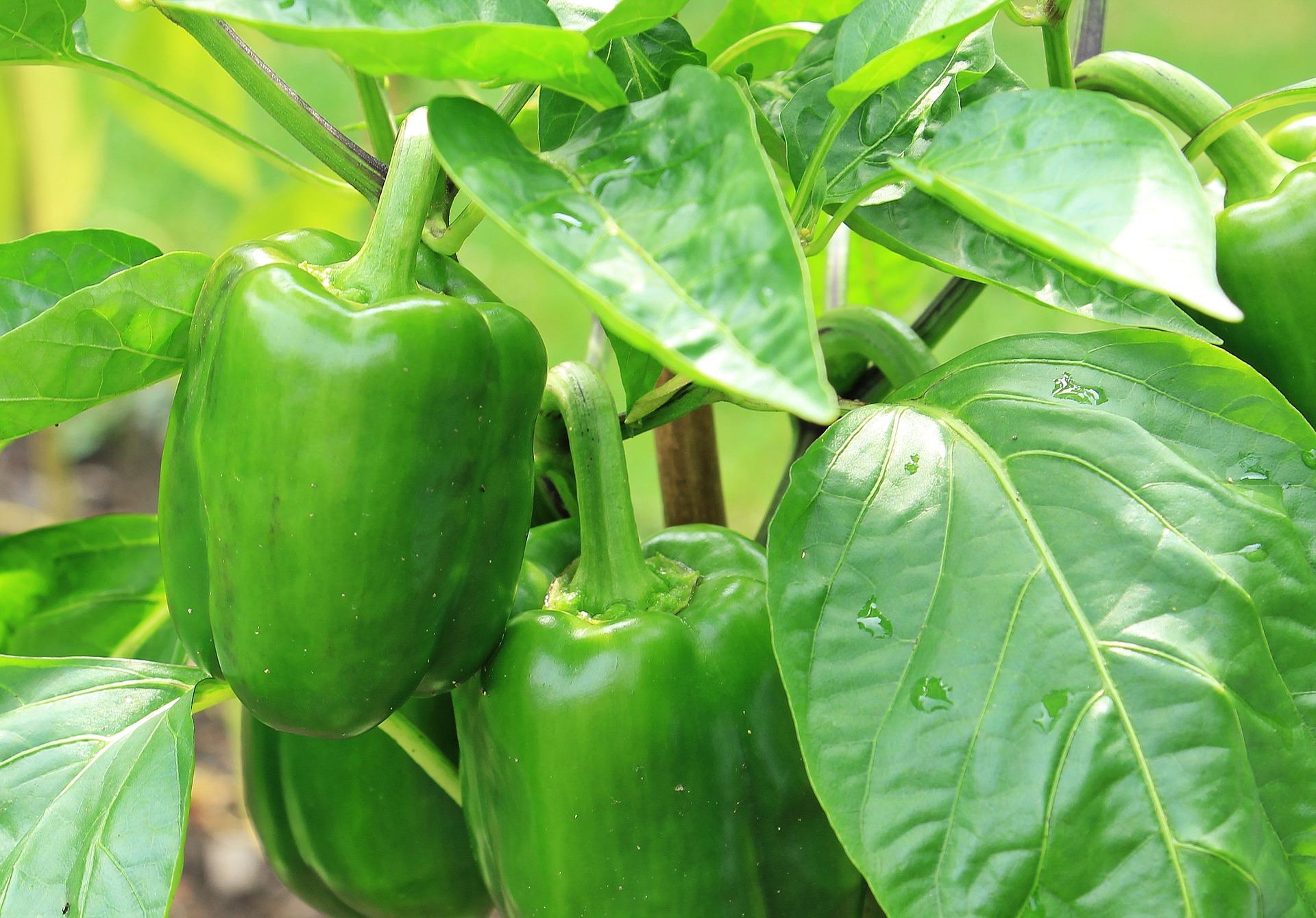Planting pepper facts
- Hardiness: Very tender warm-season perennial, grown as an annual plant in Maryland. Frost will injure top growth; needs warm weather to grow.
- Planting: Set out transplants after the soil has thoroughly warmed in the spring; start seed indoors 8 to 10 weeks before the average frost-free date (some types and cultivars require 12 weeks). Planting before soil temperature reaches 65 degrees F. will cause plants to “just sit there.” Full sun requires direct light at least 6 hours/day; prefers 8 - 10 hours/day.
- Days to maturity: Most sweet and hot types, 70-85 days from transplanting. Bell peppers may reach a mature green stage 70-80 days after transplanting and require an additional 2-3 weeks to fully ripen. Habanero types ripen 90-120 days from transplanting.
- Spacing: 12"- 24" in-rows x 30"- 36" between row; double, staggered rows in 2-ft. wide beds also works very well.
- Fertilizer needs: Medium requirement for nutrients, either from soil organic matter or fertilizers. Fertilize prior to planting, use starter fertilizer for transplants; side-dress after first fruits set. Refer to Fertilizing Vegetables for details.
- Approximate yield: 2 to 8 lbs. per 10-foot row
Pepper problems
Air pollution
Anthracnose
Bacterial leaf spot
Blossom end rot
European corn borer
Poor blossom and fruit set
Stink bugs
Sunscald
Normal Plant Characteristics of Vegetables
Viruses
Growing and care of peppers
- Plant peppers in well-drained soil or containers (5-gallon minimum).
- Peppers are produced on bushy plants that can reach 3-4 ft. in height. Plant stems become semi-woody when mature and the growth habit may be compact, erect or prostrate.
- All fruits are green in color at first and ripen to a variety of colors, like red, orange, yellow, brown, green, and purple. They also grow in a variety of sizes, shapes, and flavors.
- Peppers can be divided into three groups that can all be grown successfully in the mid-Atlantic region:
- Sweet varieties include bell, banana, sweet cherry, Italian frying;
- Hot varieties, such as serrano, jalapeno, cayenne, habanero, piquin, tabasco; and
- Southwestern/Mexican varieties, such as numex, poblano, pasilla, mulatto.
- Pungent types, referred to commonly as chile peppers, are mostly in the same species as sweet pepper types, Capsicum annum. Planting sweet types next to hot types will not make the sweet peppers hot.
- Peppers generally have a long growing season and suffer slow growth during cool periods.
- Set out transplants after the soil has thoroughly warmed in the spring.
- Pinch out early flower buds and small fruits to produce stronger, more prolific plants.
- Pepper plants are largely self-fertile but insects may be responsible for considerable crossing within and between species. Therefore, saving seed from year to year can lead to unpredictable results unless plants are screened from insects or separated by 500 ft.
- Slow, early season growth can usually be attributed to growing plants under cool conditions or purchasing over-grown, stressed transplants.
- Plant stems can become brittle and should be supported with cages or short trellises.
- Very hot temperatures, especially when evening temperatures are above 75 degrees F., will slow or stop pod production. Plant peppers where they will receive some late afternoon shade and cool down your plants with a water spray during hot, dry weather.
- Weeding - Mulch with straw, dry grass clippings, or raked tree leaves from the fall (you can lay down sections of newspaper around plants first for even better weed control). You can also lay down black plastic or black landscape fabric prior to planting.
- Watering - Uniform soil moisture is the goal when watering. Dry conditions can cause blossom drop, small fruit, and blossom end rot. Drip irrigation and soaker hoses are excellent methods for watering peppers.
Harvesting peppers
- Harvest sweet peppers when they reach full size.
- Peppers can be harvested green or allowed to ripen and change color on the plant. When allowed to mature on the plant most varieties turn red, yellow, purple, orange, or brown, are sweeter (if they are sweet varieties), and increase in vitamin A and C content. They don't ripen further after harvesting.
- Cut pods, rather than pulling, to avoid breaking branches.
- Entire plants may be pulled just before a killing frost and hung upside down in a warmer area, such as a garage, to ripen.
Storage and preservation
- Medium cool (45°-50°F), moist (95% RH) conditions; 2 to 3 weeks.
- Always wear rubber gloves when processing chiles or cleaning seeds.
